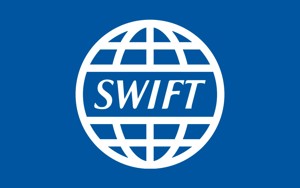SWIFT Network

This is the “internet for banks,” basically. It’s a worldwide messaging system which banks use to exchange data and payment orders. If you need to transfer money from one bank to another, this message gets sent along the SWIFT Network.
SWIFT technically stands for “Society for Worldwide Interbank Financial Telecommunication.” It’s a cooperative, funded by banks around the world. It was founded in 1973, and the first message was sent in 1977.
SWIFT develops the data standards for banking. A SWIFT message complies with specific rules created by SWIFT to ensure banks can communicate. This has resulted in many issued ISO standards.
SWIFT can sometimes come into controversy, since a single network for international transactions means that it can be monitored. The US government, in particular, has been accused on over-reaching in their requests for information and their threat of sanctions if SWIFT doesn’t comply.
Why I Looked It Up
I was reading a book about the modern private detective, and this came up. The author mentioned it if it’s just a thing investigators always have to know about.
Postscript
Added on
A CNN article on potential sanctions against Russia: What is SWIFT and why it might be the weapon Russia fears most:
The Society for Worldwide Interbank Financial Telecommunication was founded in 1973 to replace the telex and is now used by over 11,000 financial institutions to send secure messages and payment orders. With no globally accepted alternative, it is essential plumbing for global finance.
Removing Russia from SWIFT would make it nearly impossible for financial institutions to send money in or out of the country, delivering a sudden shock to Russian companies and their foreign customers – especially buyers of oil and gas exports denominated in US dollars.
Postscript
Added on
After the Russian invasion of Ukraine, someone posted this to Hacker News:
As part of my startup’s remit, I do a lot of work with clients’ SWIFT payments. I feel like the media has done a very poor job explaining what SWIFT is and how exactly it works.
SWIFT exists not for the purpose of providing the rail(s) upon which money moves but to be the messaging system which coordinates said transfers. When sending funds (typically done via a document called a MT103, which is a text file with specific formatting requirements) one informs the recipient institution by sending a SWIFT message. When it is time for the banks to actually move the funds (which often times occurs significantly after the funds are made available to the client in question) this will be coordinated through a payment system. In most cases in Europe, this is TARGET2. However, as Russia is not a member of the Eurozone, many of their impacted payments will likely be on the STEP2 payment network, which is the only European-wide clearing house. (However, these days, it isn’t uncommon for banks to work together to use multiple clearing houses across multiple jurisdictions to most efficiently move funds.)
From what I understand from banks and clients we work with who have a significant Eastern European nexus, Russia was already experiencing problems with the payment systems before the formal SWIFT bans were announced and that the effective shutdown of central bank settlements for Russia has served to bring international payments coordination for RU based institutions to a crawl.